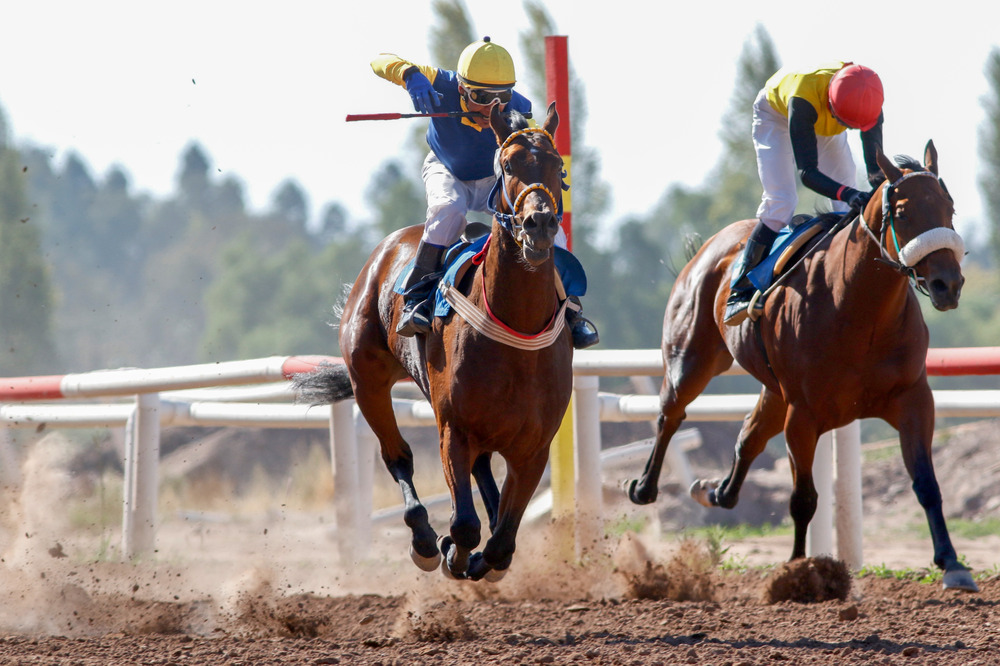In horse racing betting, understanding a horse’s stamina is crucial for making informed decisions. Stamina involves not just speed but also endurance and the ability to sustain performance over longer distances. Several factors, including genetics, training, and track conditions, influence a horse’s stamina.
To effectively evaluate these aspects, bettors can examine stamina ratings and analyze past race performances to gain insights into a horse’s capabilities.
Genetics play a significant role in determining a horse’s stamina, as certain bloodlines are known for producing horses with superior endurance. Training methods also impact a horse’s stamina, with different trainers employing specific techniques to enhance a horse’s endurance capabilities.
Additionally, track conditions, such as surface type and weather, can affect a horse’s performance and should be considered when assessing stamina.
By focusing on objective data and past performance records, bettors can better understand which horses may have an advantage in terms of stamina, reducing the reliance on chance when placing bets.
This approach enables a more analytical perspective, aiding in the identification of horses that are likely to perform well over longer distances.
Key Takeaways
- Stamina influences a horse’s ability to maintain speed and perform well in longer races over a mile.
- Genetic factors and training significantly impact a horse’s stamina and endurance capabilities.
- Track conditions and race distances play crucial roles in how stamina affects race outcomes.
- Analyzing a horse’s historical performance can provide insights into its stamina and betting potential.
- Trainer expertise in stamina development can enhance a horse’s performance in endurance-focused races.
Importance of Stamina in Racing
In horse racing, understanding stamina is essential for developing an effective betting strategy. Stamina refers to a horse’s capability to sustain speed over extended distances, which plays a significant role in influencing race outcomes. Evaluating a horse’s stamina provides valuable insights into its potential performance, particularly in longer races that require endurance.
Here are the key reasons why stamina is important:
-
Endurance Over Distance: Horses with strong stamina are able to maintain their pace over longer distances, making them strong contenders in races that exceed a mile. Their ability to avoid tiring easily can be crucial in the final stages of a race.
-
Consistent Performance: Horses with good stamina often demonstrate consistency in their racing records. They tend to perform reliably across different conditions, providing a dependable option when placing bets.
-
Late-Race Advantage: In situations where other horses may tire, a horse with superior stamina has the potential to maintain or even increase its speed, potentially overtaking competitors who falter as the race progresses.
For more info, you can check out our article Understanding Pace and Speed Ratings in Horse Racing Betting.
Factors Affecting Horse Stamina
Several factors play a crucial role in determining a horse’s stamina, influencing its ability to perform effectively over extended distances. Understanding these factors is essential for making informed decisions regarding horse racing and betting. The primary factors to consider include:
-
Training and Conditioning: Horses require regular and varied training to build endurance. Consistent and comprehensive conditioning, focusing on aerobic exercises, is essential for enhancing a horse’s cardiovascular system, thereby improving stamina.
-
Nutrition: Maintaining a balanced diet is vital for a horse’s stamina. A diet that incorporates carbohydrates, proteins, fats, vitamins, and minerals ensures that horses have sufficient energy reserves, which are critical for sustaining stamina during a race.
-
Age and Experience: Younger horses generally have less endurance compared to more experienced racers. Experience allows horses to better manage their pace and conserve energy during longer races.
-
Track Conditions: The condition of the track can significantly impact a horse’s energy levels. Soft, muddy tracks tend to drain energy faster than firm, dry surfaces. Familiarity with track conditions can assist in predicting a horse’s performance.
-
Health and Fitness: Stamina can be adversely affected by injuries or health issues. Regular veterinary examinations are important to ensure that a horse remains in optimal health and fitness.
-
Rest and Recovery: Adequate rest between races is necessary to prevent fatigue. Over-racing can lead to decreased stamina and performance, making rest an essential component of maintaining a horse’s endurance.
Breeding and Genetic Influence
Breeding and genetic influence form the basis of a horse’s stamina, alongside training and environmental factors. When evaluating a horse’s endurance potential, examining its pedigree is essential. Horses inherit various traits from their parents that can significantly impact their stamina and racing capabilities.
Key Genetic Factors
-
Bloodlines: Horses from established bloodlines known for stamina and endurance often exhibit these traits themselves. Analyzing the lineage of a horse can provide insights into its potential for long-distance performance.
-
Physical Attributes: Genetic factors determine a horse’s physical build, muscle composition, and heart size, all of which are crucial for stamina. These attributes can influence a horse’s ability to sustain effort over extended periods.
-
Breed: Different horse breeds have distinct stamina levels. For instance, Thoroughbreds are recognized for their combination of speed and endurance, making them suitable for racing.
Breeding Practices
-
Selective Breeding: Breeders strategically pair horses that exhibit favorable stamina characteristics with the aim of producing offspring with improved endurance capabilities.
-
Line Breeding: This practice involves mating horses within the same family line to maintain specific stamina traits, ensuring these characteristics are preserved across generations.
Training Techniques for Endurance
Building a horse’s stamina for racing requires a comprehensive training program that focuses on endurance development. Implementing specific techniques can enhance a horse’s physical capabilities. Here are some methods that can be systematically applied:
Interval Training
This technique involves alternating between high-intensity and low-intensity exercises. Interval training is known to improve both cardiovascular fitness and muscle endurance.
Additionally, it helps in maintaining the horse’s engagement during training sessions, reducing the likelihood of boredom.
Long Distance Workouts
These workouts involve extended periods of trotting or cantering, which contribute to building aerobic capacity and strengthening muscles.
It’s essential to increase the distance gradually to minimize the risk of injury, allowing the horse’s body to adapt progressively.
Hill Work
Training on natural or artificial inclines can enhance muscle strength and cardiovascular endurance.
Hill work also plays a role in improving the horse’s balance and coordination, which are crucial for racing performance.
Consistency and Progression
A regular training schedule is vital for building stamina.
Gradually increasing the workload ensures that the horse’s endurance develops effectively over time.
Monitoring the horse’s response to the training is important for making necessary adjustments in intensity and duration.
Rest and Recovery
Adequate rest periods between workouts are crucial for preventing overtraining and reducing the risk of injuries.
Proper rest supports muscle recovery and growth, enabling the horse to maintain optimal performance levels.
These techniques provide a structured approach to developing endurance in horses.
Over time, these methods can lead to significant improvements in a horse’s stamina, thereby enhancing performance during races.
A carefully planned training regimen is key to enhancing a horse’s ability to sustain speed over extended distances.
Analyzing Race Conditions
Race conditions are significant factors in evaluating a horse’s performance during a race. Understanding how to analyze these conditions can provide valuable insights for horse racing betting. Consider the following key elements:
Track Surface:
-
Dirt: Generally benefits horses with strong sprinting abilities due to its firm surface.
-
Turf: Typically favors horses with better endurance given its softer texture, which can demand more stamina.
-
Synthetic: Represents a middle ground; however, some horses may have a preference or adapt more effectively to this surface.
Weather Conditions:
-
Rain: Can lead to muddy tracks, which may affect both speed and stamina, potentially altering race outcomes.
-
Wind: Strong winds can impede horses, particularly in races over longer distances.
-
Temperature: Extreme temperatures, whether hot or cold, can impact a horse’s endurance and overall performance.
Distance:
-
Shorter distances generally emphasize speed, whereas longer distances require greater stamina.
-
Reviewing a horse’s past performances over various distances can be informative for predicting future race results.
Competition:
-
Analyze the skill level of competing horses in a race.
-
A field with numerous strong competitors can drive horses to perform at their best, potentially affecting the race dynamics.
Jockey and Trainer:
-
The experience and skill of the jockey can be a determining factor in race outcomes.
-
Trainers with a track record of success at specific venues may provide an additional advantage.
Frequently Asked Questions
How Can Bettors Assess a Horse’s Stamina Before Placing a Bet?
Check the horse’s past performances, focusing on longer races. Analyze pedigree for stamina traits and research training routines. Watch for consistent late-race speed. Consider track conditions and jockey’s strategy to make informed betting decisions.
Do Jockeys Influence a Horse’s Stamina During a Race?
Yes, jockeys can influence a horse’s stamina. They manage the horse’s energy by setting a pace, choosing when to push or hold back, and adapting to race conditions. Their experience and decisions directly impact the horse’s performance.
Are There Specific Races That Prioritize Stamina Over Speed?
You’ll find races like endurance or long-distance events prioritize stamina over speed. Focus on marathon races or steeplechases where horses need to maintain energy to succeed. These events test stamina more than a sprinter’s burst.
How Does a Horse’s Diet Impact Its Stamina Levels?
You’ll notice a horse’s diet directly impacts its stamina. Feeding balanced nutrients, including carbohydrates, proteins, and fats, enhances endurance. Ensure proper hydration and avoid overfeeding to maintain optimal energy levels for better racing performance.
Can a Horse’s Previous Race Performance Indicate Stamina Potential?
You can assess a horse’s stamina potential by analyzing past race performances. Look for consistent speed in longer races and recovery between events. Patterns of endurance indicate that the horse might possess strong stamina for future races.
Conclusion
In horse racing betting, understanding stamina is key to making informed wagers. Focus on these aspects:
- Genetics and Breeding: Horses with strong lineage often have better stamina.
- Training Techniques: Effective training enhances a horse’s endurance.
- Nutrition: Proper diet supports stamina development.
- Race Conditions: Track conditions affect a horse’s performance.
By evaluating these factors, you can predict which horses will maintain their energy throughout longer races, giving you a competitive edge in betting.

